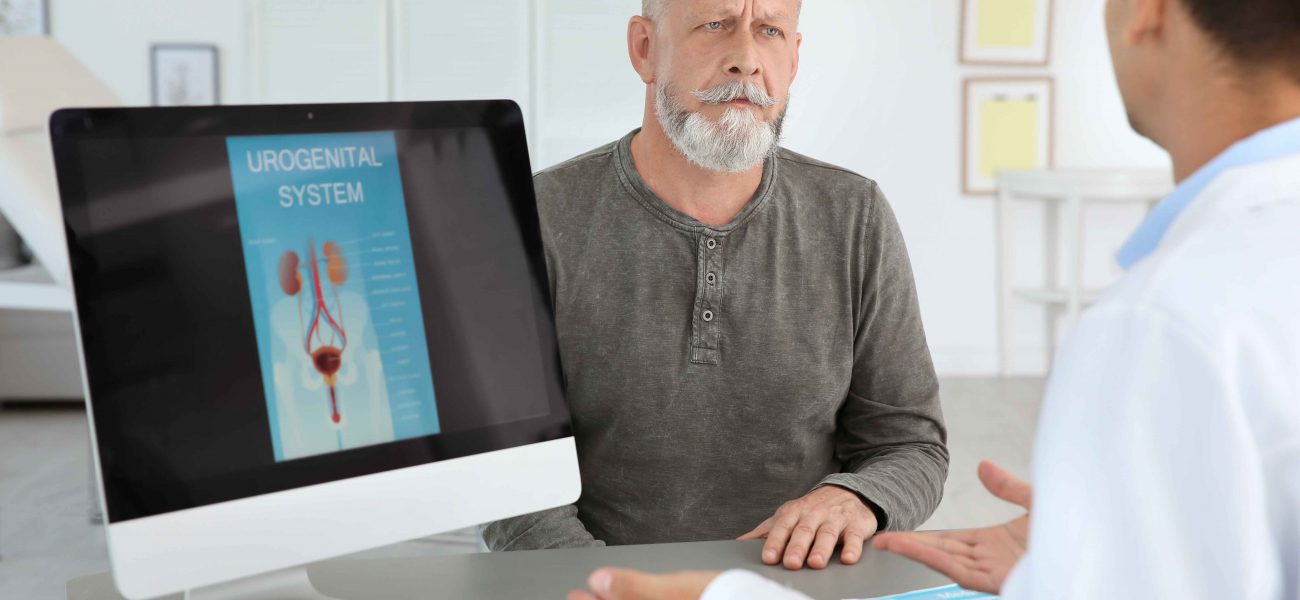Incontinence after Prostate Surgery: What you should know?
Prostate surgery is a major operation performed to eradicate prostate cancer in men. And, with all pain and unpleasantness, experiencing incontinence as one of the side effects can contribute to flaring up cases of discomfort and disappointment.
Urinary incontinence is an unwanted condition associated with uncontrollable leakage of urine. It can happen to both men and women. However, men can potentially encounter bladder problems after prostrate surgeries, which can decrease their quality of life unknowingly.
To help you be safe from the nightmares of involuntary leakages, we have curated a guide to knowing incontinence after Prostrate Surgery for men.
First things first, what causes incontinence after Prostate Surgery?
The prostate is found just below the bladder in the male body structure. During the surgery or due to the radiation, the nerves and muscles or sphincter of the bladder may be harmed. This triggers urinary incontinence after the operation.
How to manage Incontinence after Prostate Surgery?
When talking about curbing urinary incontinence, there are a handful of ways to successfully relieve this discomfort. Such as:
● Kegel Exercises
Kegel exercises are your best bet to begin your quest to get rid of incontinence. These exercises are powerful enough to beat incontinence under duress by strengthening your pelvic floor muscles.
● Biofeedback
After performing kegel exercises regularly, prefer biofeedback to know the progress of your exercises and their effectiveness in maintaining your pelvic muscles.
● Incontinence Essentials
Another way to manage incontinence is by using the no. 1 adult diaper pants in India – Lifree Extra absorb pants with high absorbent power, and stretchable or breathable waistbands to provide optimum comfort and safety from leakage. Not to mention, it helps in overcoming mobility conditions and regaining that lost confidence.
● Medical procedure
In severe cases where men experience continuous incontinence, they follow the path of medical procedures to efficiently treat bladder problems. You can choose this treatment method after consulting with your physiotherapist or medical examiner.
FAQ’s
2. Why does incontinence happen after prostate surgery?
Incontinence happens after prostate surgery mainly due to changes in the urinary system caused during the procedure. The prostate surrounds the urethra, and during surgery—especially radical prostatectomy—it is removed. This can affect the surrounding muscles and nerves that control urination. As a result, the bladder may struggle to hold urine or the sphincter may not function properly. Healing takes time, and in many cases, the body regains control gradually. Factors like age, health, and type of surgery also influence how long incontinence lasts. Proper exercises and guidance from doctors can support recovery.
3. How long does incontinence last after prostate surgery?
The duration of incontinence varies from person to person. For most men, it improves within a few weeks to months after surgery. Light leakage during physical activity is common early on, but regular pelvic floor exercises can speed up recovery. Some may regain full control within 6 months, while others may take up to a year or more. A small number might experience long-term incontinence and need ongoing support. The healing timeline depends on age, general health, surgical method used, and consistency with recovery practices. Regular follow-ups with your doctor help monitor progress and adjust treatments if needed.
4. What types of incontinence occur after prostate surgery?
The most common type after prostate surgery is stress incontinence, which causes leakage when pressure is placed on the bladder—such as when coughing, sneezing, laughing, or lifting objects. Some men may also face urge incontinence, where there’s a sudden, strong need to urinate but not enough time to reach a restroom. Others may experience mixed incontinence—a combination of both types. Identifying the specific type of incontinence helps doctors suggest the right treatment approach, including exercises, medication, or support products. Each type has its own set of strategies that help manage symptoms and support better bladder control.
5. Can pelvic floor exercises help with incontinence recovery?
Yes, pelvic floor exercises—commonly known as Kegel exercises—can greatly help incontinence recovery. These exercises strengthen the muscles that control urine flow, especially after prostate surgery. Doing them regularly helps improve bladder control and reduces accidental leaks. The key is to find and engage the right muscles without tightening the stomach or thighs. Start slowly, and increase repetitions as strength builds. Doctors or physiotherapists can guide you on proper technique. Many men see progress within a few weeks to months if they are consistent. It’s a safe and natural way to support recovery and improve confidence.
6. Are there products to help manage incontinence after surgery?
Yes, there are various products that help manage incontinence after prostate surgery. Adult diapers, pant-style absorbent products, and pads are commonly used to stay dry and comfortable. These products are made to handle different levels of leakage and are easy to use. Some are designed for daytime movement, while others are made for nighttime protection. Special underwear or inserts can also be used discreetly. Using these products gives peace of mind and allows people to carry on with daily activities confidently. Choosing the right fit and absorbency level is important, and a doctor or pharmacist can help recommend suitable options.
7. When should someone see a doctor about post-surgery incontinence?
If incontinence continues beyond a few months, gets worse, or affects daily life, it’s best to see a doctor. While some leakage is normal shortly after surgery, persistent or heavy leakage may need medical advice. Doctors can check if recovery is on track and suggest treatments or therapies to improve bladder control. Sudden changes, such as increased leaks or pain while urinating, should not be ignored. Early help can prevent complications and speed up recovery. Don’t feel embarrassed to ask—doctors understand and can provide the right support, guidance, and care to help you feel better.
8. Can lifestyle changes help manage incontinence?
Yes, lifestyle changes can make a big difference. Simple habits like avoiding too much caffeine, drinking fluids at the right times, and maintaining a healthy weight can reduce pressure on the bladder. Regular pelvic floor exercises strengthen the muscles needed for control. Staying active, eating balanced meals, and quitting smoking also help. Using the restroom before long trips or physical activity can prevent accidents. It’s also helpful to plan ahead and carry extra products if needed. These small changes, combined with medical advice, can greatly improve comfort and confidence during recovery from prostate surgery.
9. Is incontinence after prostate surgery permanent?
In most cases, incontinence after prostate surgery is not permanent. Many men regain bladder control over time, especially with the help of pelvic floor exercises, lifestyle changes, and doctor-guided care. The body needs time to heal, and improvements are often seen in the first few months. However, for some, full recovery may take longer. Only a small number of men experience long-term incontinence. In such cases, there are effective treatments and support products available to manage it. Speaking with a doctor helps determine the right steps and ensures the best chance of improvement.
10. How can emotional health be affected by incontinence?
Dealing with incontinence after surgery can lead to feelings of embarrassment, frustration, or low self-confidence. Some may avoid social situations or feel anxious about accidents in public. It’s important to know that these feelings are normal, and you’re not alone. Talking openly with loved ones or healthcare professionals can ease stress. Joining support groups or connecting with others going through the same experience can also help. Practicing self-care, using the right products, and focusing on recovery steps boosts confidence. Taking care of your emotional health is just as important as physical recovery.






















